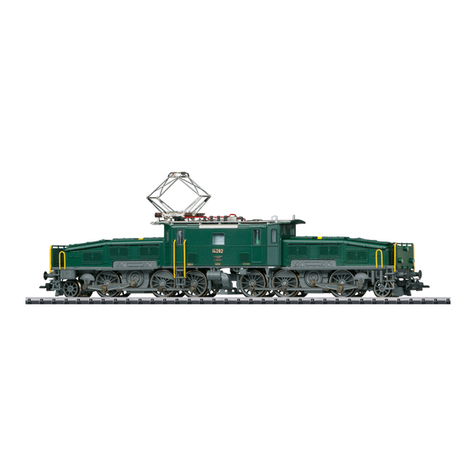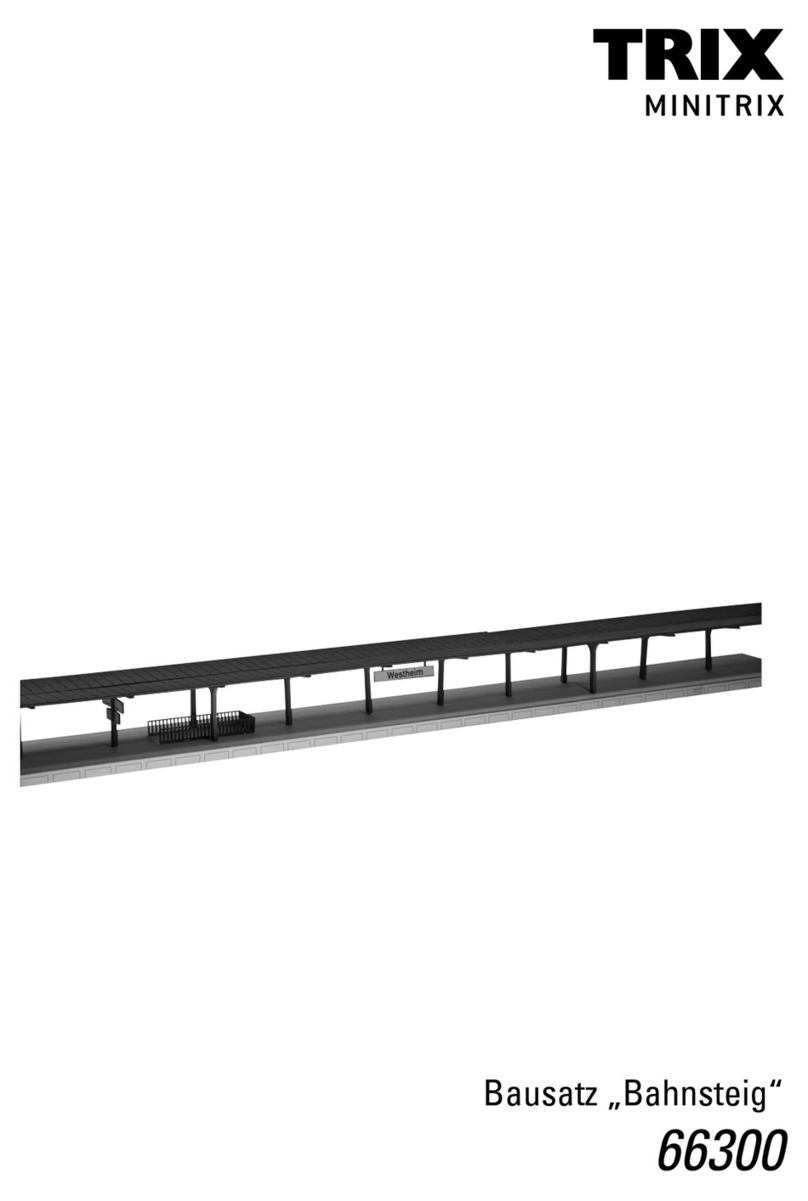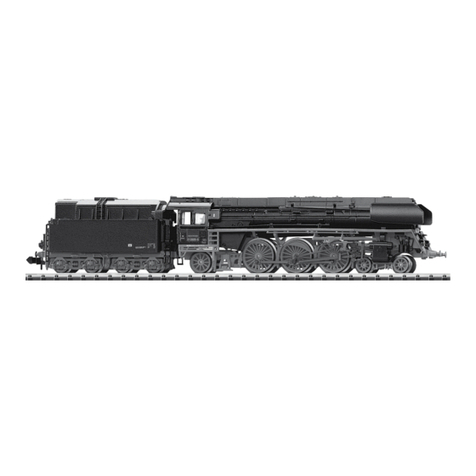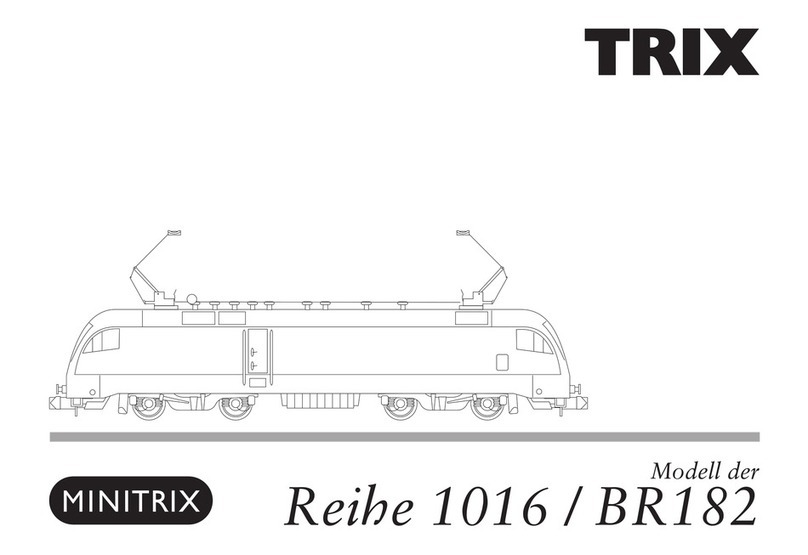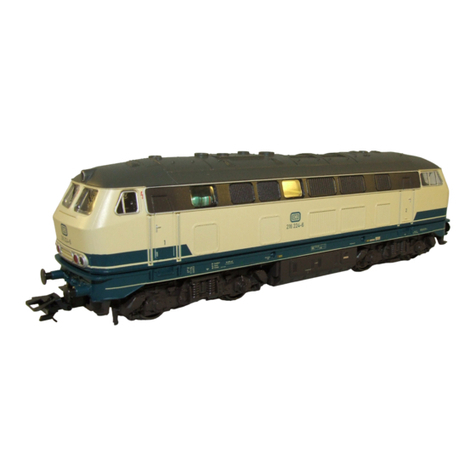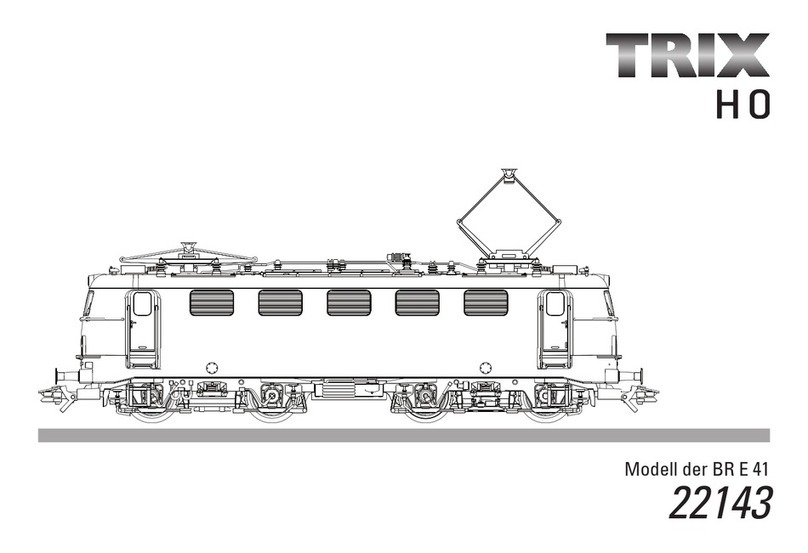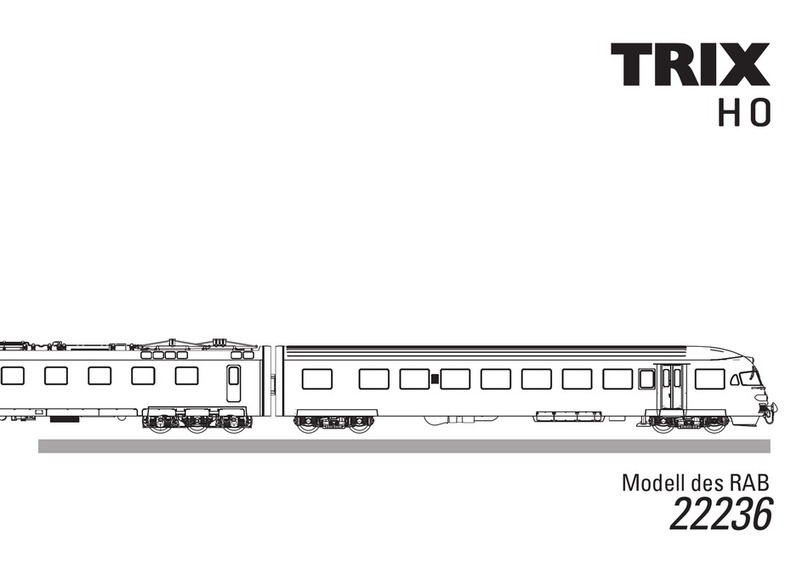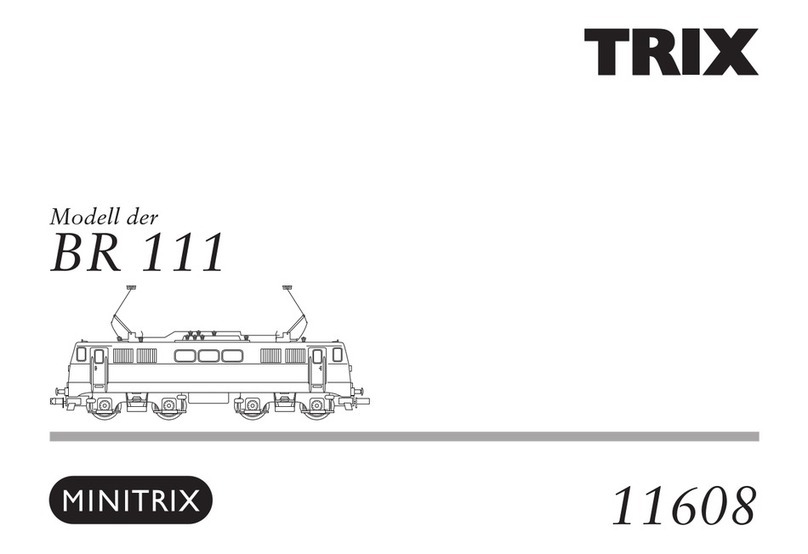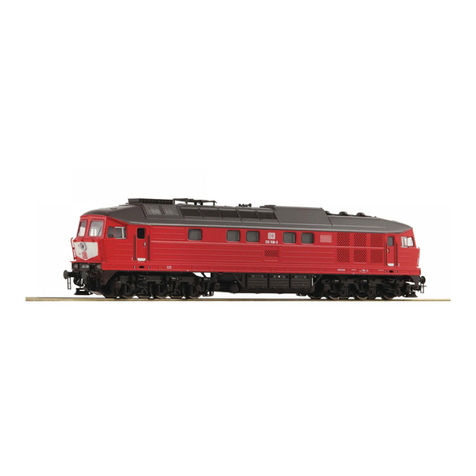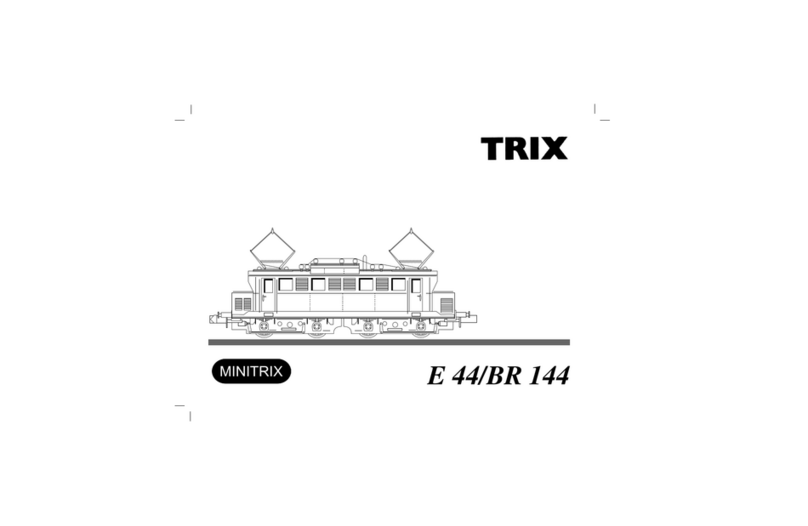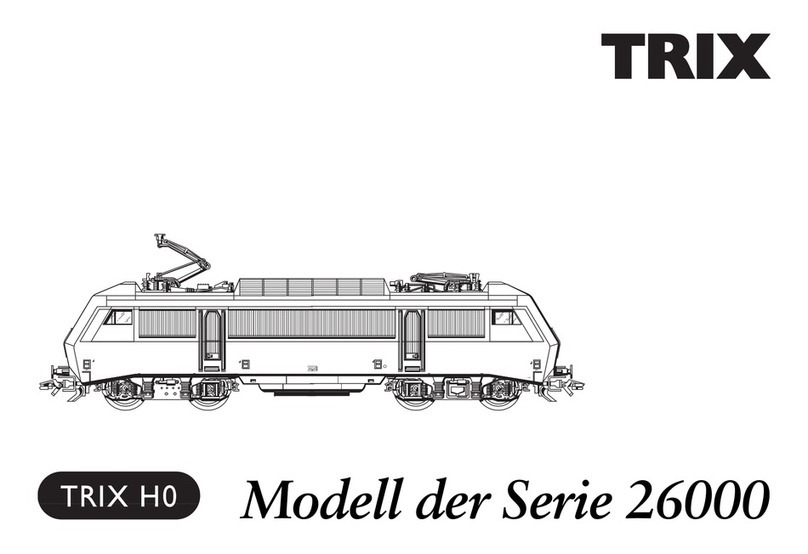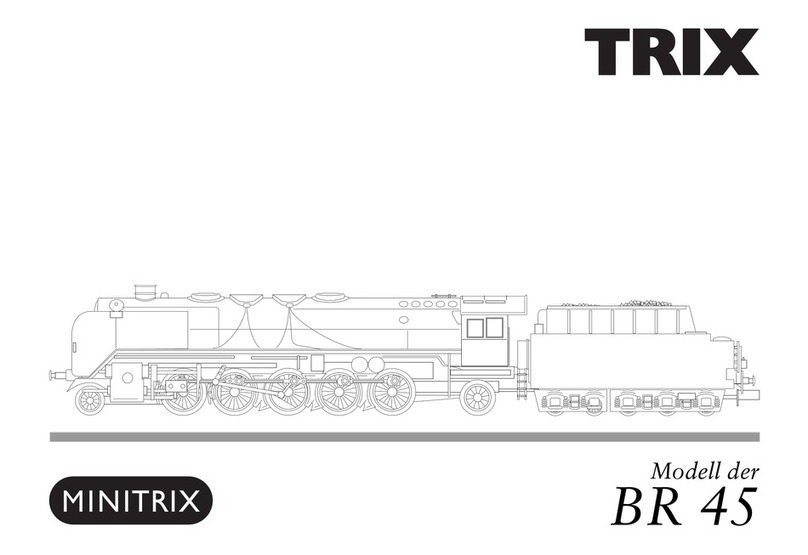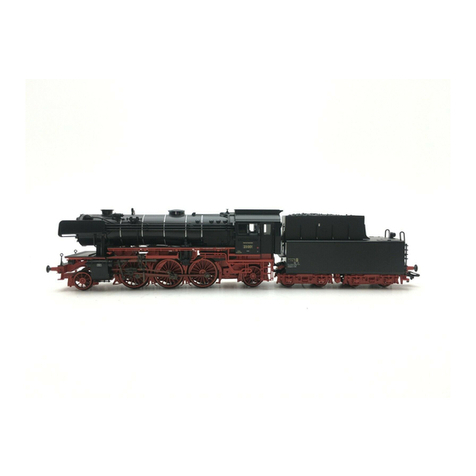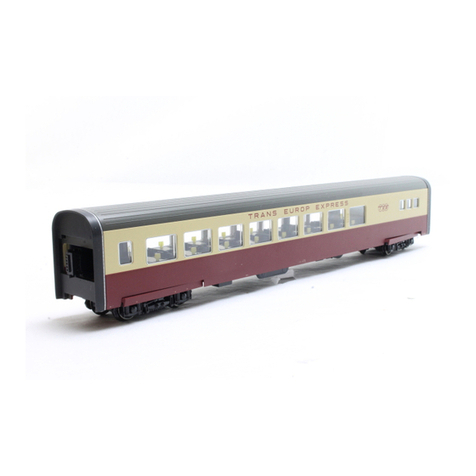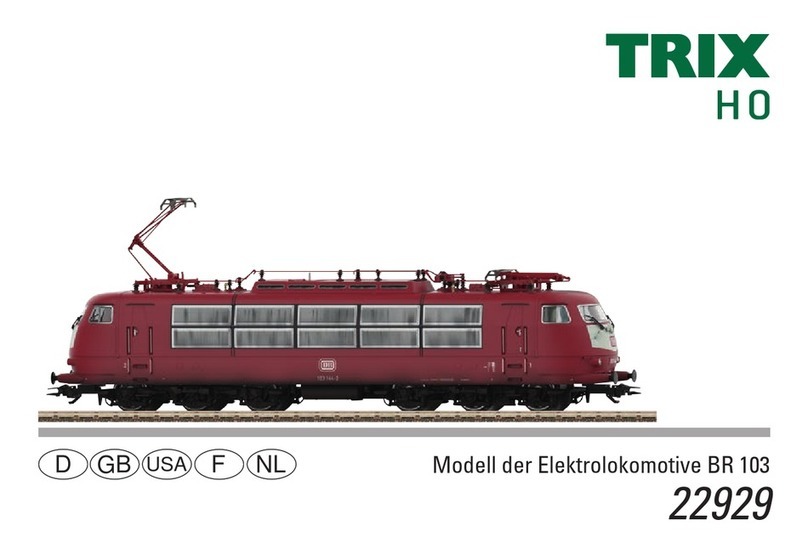
5
Informations concernant la locomotive réelle
Après la reprise en 1909 de la ligne du Saint-Gothard par les chemins
de fer fédéraux suisses (CFF), la nécessité de l’acquisition d‘une lo-
comotive plus performante capable d’assurer de façon plus rentable
l’exploitation sur les rampes à forte déclivité du Saint-Gothard et les
voies d’accès en plaine se fit rapidement sentir. Les locomotives
devaient être capables de remorquer non seulement des trains
marchandises, mais également des trains rapides sur les rampes
à forte déclivité, ce qui outre une grande force de traction exigeait
également une vitesse maximale de 65 km/h.
Dès 1913, les deux prototypes 2901 et 2902 type C 5/6 étaient
disponibles pour des essais. Ils étaient équipés d’un moteur à
quatre cylindres à simple expansion ce qui ne s’avéra toutefois
pas très satisfaisant. Pour les locomotives de séries, on se re-
porta donc aux expériences probantes réalisées avec le moteur
des locomotives C 4/5 de la série 2701-32 et équipa les machines
d’un moteur compound à quatre cylindres d’après Von-Borries.
Les deux cylindres à haute pression situés à l‘intérieur agissai-
ent ainsi sur le deuxième essieu moteur, tandis que les cylindres
extérieurs à basse pression agissaient sur le troisième essieu
moteur. Afin d’assurer une bonne inscription en courbe, l’essieu
couplé le plus à l’arrière avait un jeu de 25 mm et les boudins
de roues avaient été diminués sur le troisième essieu moteur.
Entre 1913 et 1917, 28 machines de série au total, portant les
numéros 2951 à 2978, furent mises en service, la 2978 représen-
tant simultanément la dernière locomotive à vapeur pour voie
normale livrée aux CFF.
Informatie van het voorbeeld
Na de overname van de Gotthardbahn in 1909 door de Zwitserse
Bundesbahn (SBB), werd al snel duidelijk dat de aanschaf nodig
was van een locomotief met een groter prestatievermogen, om
die op de steile hellingen van de Gotthard in te zetten en om de
treintrajecten in de laaglanden zuinig te kunnen organiseren.
Naast het trekken van goederentreinen moesten de locomotie-
ven ook voor sneltreinen op de steile hellingen kunnen worden
ingezet, wat naast een grotere trekkracht ook een topsnelheid
van 65 km/u vereiste.
Reeds in 1913 stonden de twee prototypes 2901 en 2902 van de
serie C 5/6 ter beschikking om getest te worden. Ze waren met
een viercilinderaandrijving en enkelvoudige expansie uitgerust,
die zich echter niet speciaal kon bewijzen. Daarom greep men
bij de serielocomotieven terug naar de goede ervaringen met
de aandrijving van de C 4/5-locomotieven van de serie 2701–32
en werd een viercilinderverbindingsaandrijving volgens Von-
Borries ingebouwd. Hier werkten beide inwendige hogedruk-
cilinders op het tweede aandrijvingswielstel, de uitwendige
lagedrukcilinders daarentegen op het derde aandrijvingswie-
lstel. Om een goede loop in de bochten te verzekeren, had het
achterste koppelingswielstel 25 mm speling en bij het middelste
aandrijvingswielstel waren de wielkransen verzwakt. Tussen
1913 en 1917 werden in totaal 28 seriemachines met de nummers
2951-2978 in dienst gesteld, waarbij de 2978 tegelijk de laatste,
aan SBB geleverde stoomlocomotief voor normaalspoor was.



